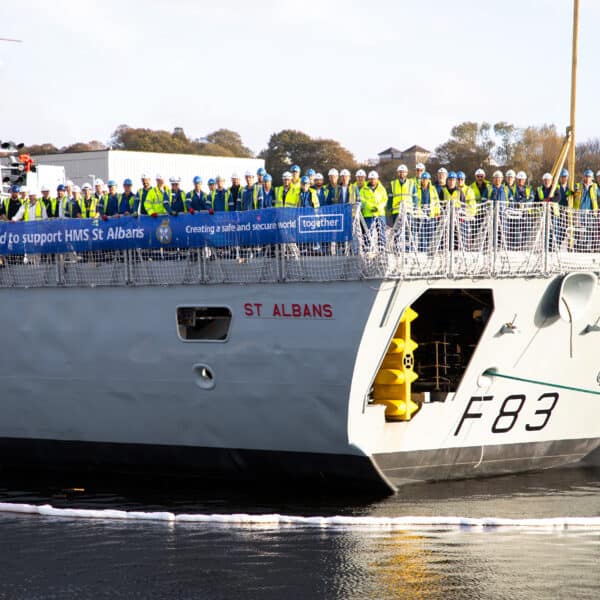14 Nov 2023
HMS St Albans ship’s staff move on board

Babcock is celebrating a major milestone in the overhaul of HMS St Albans as the ship’s staff move on board.
The Type 23 frigate has been undergoing a comprehensive life-extension at our Devonport facility.
In the next stage of her returning to the sea, the 185-strong ship’s crew have moved onto the high-tech frigate and are becoming familiar with their new surroundings.
Around 1.2 million working hours from Babcock’s dedicated team has gone into HMS St Albans’ refit, with work including some 350 structural enhancements, a power generation upgrade and propulsion motor overhaul.
She is now the most advanced, equipped, and capable Type 23 frigate in the Royal Navy’s fleet, boasting next-generation weapons systems and radar.
In a time of increasing geopolitical instability, now more than ever what we do matters – and programmes like this life-extension are central to ensuring our customers’ critical services are readily available, affordable, and long-lasting. Their mission is our mission.
Gary Simpson, Managing Director of Babcock’s Marine Support business, said: “We are proud to work with the Royal Navy to carry out comprehensive life-extensions of its Type 23 fleet, with HMS St Albans the latest frigate to benefit from Babcock’s world-class support.
„Our team of engineers, fabricators, technicians and experts have been working tirelessly to ensure the overhaul of HMS St Albans is a resounding success and we’re excited by this milestone which sees her crew move back on board.”
Senior Naval Officer Lieutenant Commander Byron Linn said, “This marks the start of a journey that will bring St Albans back to front-line operations. A huge amount of work has been completed by my Ships Company, Babcock and other supporting contractors to get to this point, and it was important to mark the occasion properly.
“Our focus now is to prepare St Albans for her return to sea. We have a long journey still to complete but my team are ready for the challenge.”